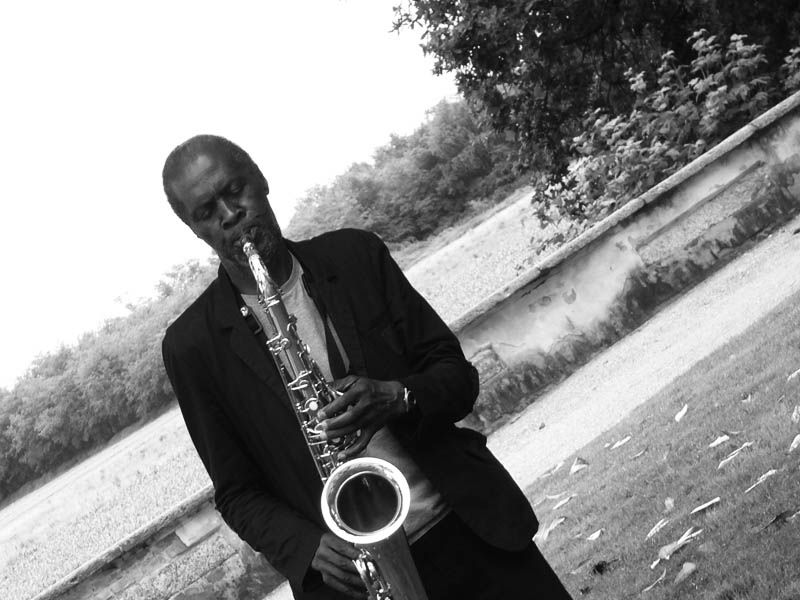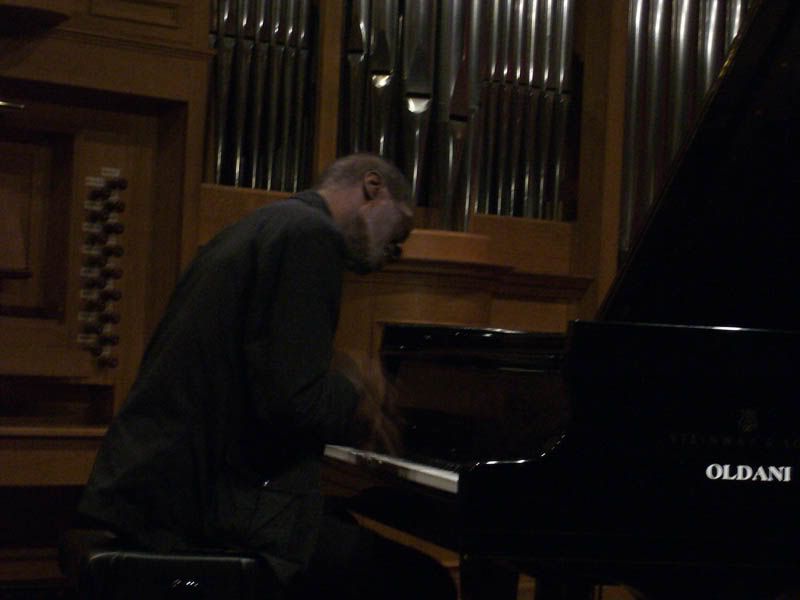Hyperfragmentation of today's music business sometimes doesn't help that much, if you want to give the right value to people, movements, or even moments in the history of a particular style. In 2003, manifestolibri published a little but important book (138 pp. only) titled "Un cielo di stelle - parole e musicadi Mario Schiano". His author, Pierpaolo Faggiano, is a journalist, that writes also for the italian All About Jazz site. The book, conceived as a long interview with Italian saxophonist Mario Schiano, is accompanied by the CD "Apollon - Una fabbrica occupata". Recorded in 1968 by Schiano himself with bassist Marcello Melis and drummer Marco Cristofolini, the music, never available before in its entirety, is the soundtrack for Ugo Gregoretti's movie with the same title.
Apollon was in fact a typography placed in Rome. In 1968 employees took it up for one entire year; Gregoretti made a documentary with squatting images, and superimposed the voice of actor Gian Maria Volonté (a famous icon of Italian social consciousness and political commitment through artistic expression) as a narrator. Some fragments of the music from this records were put throughout the scenes, but they were in fact very short pieces: in fact, the record was issued with this book for the very first time. It's really a pity that this book and CD were no longer reissued after their first press, but they are actually easily available through the publishing house or in Italian reminders bookstore.
One of the pivotal figure in the development of free improvisation in Italy, Mario Schiano, born in 1933 in Naples, crossed his career with the likes of Marcello Melis, Bruno Tommaso, Giancarlo Schiaffini, Giorgio Gaslini in Italy, and with internationally recognized artists such as Joelle Léandre, Fred Van Hove, Paul Lovens, Han Bennink, Misha Mengelberg, Mark Dresser, Dave Holland, and Sam Rivers. He started playing with his Gruppo Romano Free Jazz in 1966 in Rome, after shorts and criticized experiences in his homeland. The trio was Schiano on alto, bassist Marcello Melis and drummer Franco Pecori. In those years Rome was the base for internationally acclaimed musicians like Gato Barbieri, Don Cherry, and Steve Lacy.
"Apollon" is only a small, but highly interesting, part of that reciprocal involvement between musicians, movie directors, writers, intellectuals, with the politics of that time and creativity in an attempt to suggest a more open and deeper look on what was going on in society and in the world. Marcello Melis, just to name another important collaboration of this period, was involved in Pier Paolo Pasolini's movie "Appunti per un'orestiade africana". For the soundtrack, he worked on Sardinian ethnic traditions, mixing them with African-American music, as he did also in his "Perdas de fogu" (RCA, 1975, featuring Don Pullen on piano, Sheila Jordan on voice, Bruce Johnson on guitar and Jerome Cooper on drums) and "The new village on the left" (Black Saint, 1977, with Roswell Rudd on trombone and Enrico Rava on trumpet) records. That was the environment, with musicians merging different levels and shapes of both innovation and tradition.
Schiano himself was heavily involved in mixing free improvisation with various ethnic forms of music, often misunderstood by producers, but nonetheless keeping on pushing his creativity. Further, after the hot season of political and social protests was drowned under terrorism and international conspiracies, fermented in order to put Leftists apart from Italian government, Mario Schiano won't give up. He worked hard on experimental music: a solo saxophone record produced by Gianni Sassi (that in those days was trying to disclose to a large audience John Cage's aesthetics and Demetrio Stratos' experimentations on voice diplophonies along with Nanni Balestrini post-Gruppo '63 writings, just to name his most famous attempts in disclosing avant-garde to a most popular and young audience), and a series of attempts to mix creative jazz and cabaret structures, with a notable record such as "Un cielo di stelle" (Cramps, 1979, co-titled with Tommaso Vittorini)
The heritage of Mario Schiano is now shared and preserved between his closest collaborators. The most important is the experience of the Italian Instabile Orchestra, in which he played for many years, spanning through a career culminating in a record with pianist Cecil Taylor ("The owner of the river bank", Enja, 2003), that gave the orchestra one of his typically short, but relevant, appreciation: "The Instabile can play". The book is closed by three short writings composed between 1979 and 1982. Three ironic portraits of the environment of the time, and of the world and attitude related to the music business. I personally hope not only for a new reissue of the book, but also for an English translation of it. In the meantime, for all who wants to enjoy the music, at the addresses mentioned in this article the book+CD is all still available, and for a very cheap price.
Related Links:
Pierpaolo Faggiano at AllAboutJazz Italy
Italian movie director Ugo Gregoretti
talks about the making of "Apollon"







